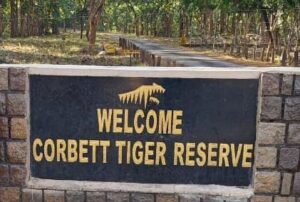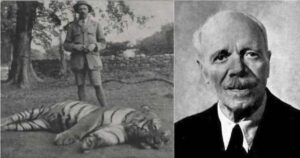The Ramganga National Park or Jim Corbett National Park, is one such place you can never have enough of. It is India’s first national park, which is spread over an area of about 521 Km. Jim Corbett National Park is located in Ramnagar, within the Nainital District of Uttarakhand.
It was first established as Hailey National Park in 1936, renamed Ramganga National Park in 1954-1955 and was again renamed in 1955-1956 as Corbett National Park. The reserve is home to a large number of tigers (highest compared to any other national park).

Other than its tigers and Sal woods it has a vast range of flora and fauna which attracts a huge number of tourists and nature lovers. A Corbett travel itinerary is incomplete without exploring the five popular zones, segregated according to the safaris. Namely: Bijrani zone, Dhikala Zone, Durga Devi Zone, Jhirna Zone and Dhela Zone.
Each zone has its own specification;
|
Bijrani Zone |
Dhikala Zone |
Durga Zone |
Jhirna Zone |
Dhela Zone |
|
Bijrani Zone is the most visited part of the national park and has dense forests, vast grassland, river plains and chance of encountering a Bengal Tiger in its natural habitat, |
Dhikala zone is the largest and most stunning part of the park with the best forest lodges on the sidelines of Patli Dun Valley. |
Durga Devi Zone is famous for its dense forest and varying altitudes, perfect for bird watchers. |
Jhirna Zone is the most -visited zone of the national park as it is open year-round. Black bears are frequently seen and are a major attraction besides tigers. |
Dhela zone is the newest addition (added in 2014) which is open throughout the year and is a paradise for photographers and bird watchers. |
History of Jim Corbett National Park

Established in 1936, during British Raj, it was named Hailey National Park after a governor of the United Provinces, William Malcolm Hailey. Its new name is Corbett National Park named after Edward James Corbett, a naturalist and conversationalist.
Jim Corbett National Park Ecosystem
Situated at the foothills of Himalayas it’s a high-altitude Ecosystem. It comprises temperate forests, alpine meadows, and snow-capped peaks. They provide habitat to species like the Himalayan black bear, serow, and numerous bird species. It contains over 586 species of resident and migratory species of birds making it one of the richest bird regions in India. Birdlife International has declared the area as an ‘Important Bird Area’.
|
Species |
# of Species |
|
Tree |
110 |
|
Mammals |
50 |
|
Birds |
580 |
|
Reptile |
25 |
|
Plants |
617 |
Best Time to Visit Jim Corbett
Nature seekers find beauty in every season of the year but there are few special seasons for those who like the best of it. The best time to visit the reserve is from Mid-November to March, which is perfect for visitors and wildlife residing at the park.
During winter mornings it is merely possible to spot a tiger in this season. It is advised to avoid the monsoon season as some parts of the national park are then closed. In summers one might not spot fauna easily but can only find sightings near the pond. Winters are even best for bird watchers and photographers as you can spot a variety of species inside the wood.

